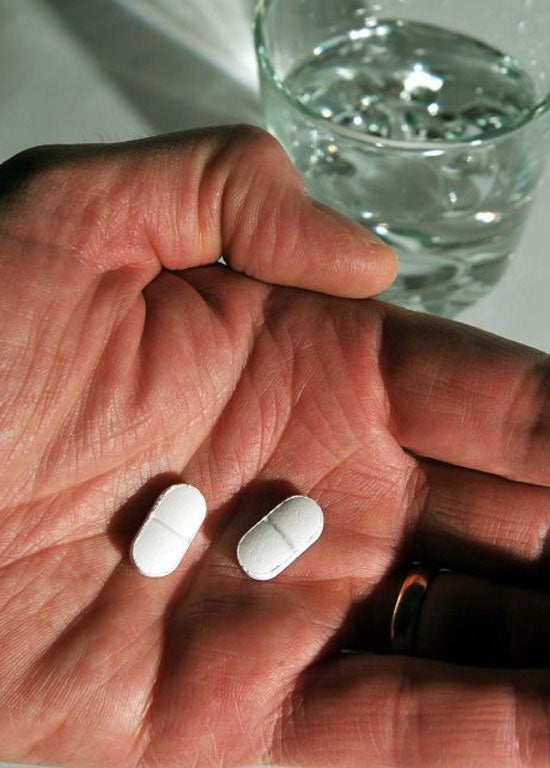'No new evidence': Health bodies clash over draft guidelines that warn against dangers of using paracetamol to treat osteoarthritis
New advice from NICE claims that higher doses of paracetamol could lead to multiple adverse effects

Your support helps us to tell the story
From reproductive rights to climate change to Big Tech, The Independent is on the ground when the story is developing. Whether it's investigating the financials of Elon Musk's pro-Trump PAC or producing our latest documentary, 'The A Word', which shines a light on the American women fighting for reproductive rights, we know how important it is to parse out the facts from the messaging.
At such a critical moment in US history, we need reporters on the ground. Your donation allows us to keep sending journalists to speak to both sides of the story.
The Independent is trusted by Americans across the entire political spectrum. And unlike many other quality news outlets, we choose not to lock Americans out of our reporting and analysis with paywalls. We believe quality journalism should be available to everyone, paid for by those who can afford it.
Your support makes all the difference.Two of the country’s leading health bodies have clashed over new draft guidelines that warn against the dangers of using paracetamol to treat a common form of arthritis that affects one million people in the UK.
The National Institute for Health and Care Excellence (NICE) released draft guidance earlier this month, updating its advice to doctors recommending drugs for osteoarthritis.
It warned that experts were “extremely concerned” that higher doses of paracetamol could lead to multiple adverse effects, including heart, kidney and intestinal problems, and recommended GPs only prescribe the “lowest effective dose” for the “shortest possible time”.
However, the Medicines and Healthcare products Regulatory Agency (MHRA) has said that there was “no new evidence” to support the draft guidance’s revised advice.
Osteoarthritis is the most common form of arthritis, and usually affects the over 50s, with women more likely to develop the condition than men.
The new NICE guidelines said that paracetamol was of “limited benefit” and urged doctors to practice caution in light of the risks – a new position that came as a surprise to many GPs.
Doctors have raised concerns that cutting paracetamol prescriptions would result in a rise in the use of alternative opioid treatments, which can leave older patients confused and more likely to suffer from constipation and associated complications.
However, Professor Martin Underwood, professor of primary care research at Warwick University and a GP in Coventry, told the GP’s magazine Pulse that the NICE recommendations were sound.
“In osteoarthritis the evidence for its effectiveness is weak and it probably only has a small effect. That small effect size, set against the wider observational evidence for paracetamol having more adverse events than we previously thought, on average means the balance of risks and benefits would not justify using it.”
In their statement to a public consultation over the draft guidance, the MHRA said: “On the basis of the information currently available, there is no new evidence that would change the benefit risk balance of the use of paracetamol in the care and management of osteoarthritis. As with any draft guideline, there should be no change in the current use of paracetamol in the care and management [of osteoarthritis in adults] until such time as the guideline is finalised.”
A NICE spokesperson said: “Taken in modest doses for short periods, the available evidence suggests that paracetamol is relatively safe. The problem is linked more to taking high doses for long periods of time… The MHRA and NICE have different roles so it’s possible that different conclusions may be reached as a result.”
The consultation on NICE’s draft guidance will be completed by October.
Subscribe to Independent Premium to bookmark this article
Want to bookmark your favourite articles and stories to read or reference later? Start your Independent Premium subscription today.
Join our commenting forum
Join thought-provoking conversations, follow other Independent readers and see their replies
Comments